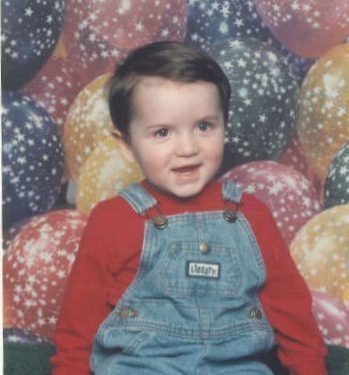When my son was 2 1/2-years-of-age, he taught me a very important lesson about identifying things that are important, and how not to create unnecessary stress for myself. From 1992 until 1997, I was a student at Southern Baptist Theological Seminary where I earned a Master of Divinity in Pastoral Counseling. During that same time, I was also working a full-time job as a Needs Assessment Coordinator for Charter Hospital in Louisville, KY. To assert that my schedule was overbooked is a serious understatement. I was in class and working at St. Matthews Pastoral Counseling Center (my practicum site) each morning and early afternoon. Then, I went to work at the hospital for second shift. Most of my papers and other assignments were completed at midnight and after.
Dr. Leigh Conver was one of my professors, and our class size was very small. In his classes, he often required that the students divide up the lessons of the semester and each of us would take turns teaching the topic of the day. If you are teaching something to a group of students, you are more likely to be prepared. Dr. Conver actively participated in our discussions to ensure that we covered all the important material.
I worked on my project for several weeks prior to my scheduled day to teach. I developed materials for my classmates that included a genogram, which is a drawing of a family tree that has multiple symbols to indicate family dynamics. Color significantly improved the material because it made the destructive family dynamics much more apparent. On the day before I was to teach, all of my resources were prepared. The only thing I needed to do was to print the documents. My plan was to go to Kinkos, an office supply chain, and print the documents.
After I finished my shift at the hospital, I walked into Kinkos with my 3.5-inch floppy disk prepared to finally see a hard copy of my final product. I worked with the assistants at Kinkos for several hours and the software in which I had created my project was not compatible with anything available there. In total frustration, I went home and sat down with my 24-pin dot matrix black and white printer. After printing the documents, I sat at my desk. Obviously, I was emotionally and physically exhausted with my 8:00 am class now only 6 hours away. My 2-year-old son, Stephen, walked into my office. He almost never woke up in the middle of the night. So, the fact that he came in there startled me for a second. He noticed that I was crying and asked about my tears. I remember wondering how I was going to explain all of this in a way that he could understand. I said, “Well, I can’t get the computer to put color on my paper.” Steve looked at me with disbelief and said, “I can do that Daddy.” He removed the paper from my desk and took it into his bedroom. He had been so excited earlier that month because he was finally tall enough to turn on the light switch. I sat there in my chair wiping the tears from my face, as I noticed the light in his bedroom illuminate. I walked into his room and found him lying on the floor with my paper. Using his crayons, he put color all over it. My son’s simple answer to my problem helped me to realize how much unnecessary stress I was creating for myself. Since our class was a small intimate group of students, I even went to class with the paper that Stephen colored, and I was able to share the lesson with my friends.
Currently, Stephen is 24-years-old and is studying engineering at Western Carolina University. I hope, as he is enduring the struggles of academic pressure, that he will remember the lesson that he taught me. I also hope and pray that he will not kill me for sharing the wonderful picture from days gone by.
Do you often endure unnecessary stress because you place unrealistic or unhealthy expectations on yourself? If so, how do you find peace amid the storm?



One thought on “A wonderful lesson taught by my son”
Loved this article too!